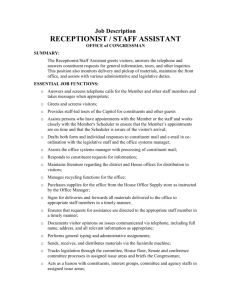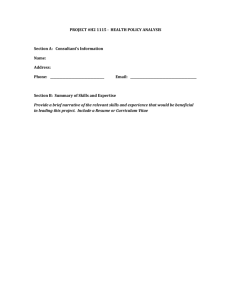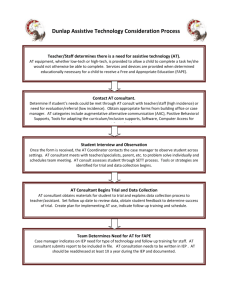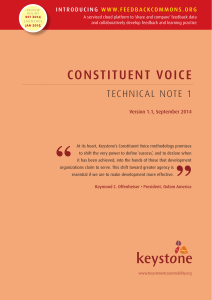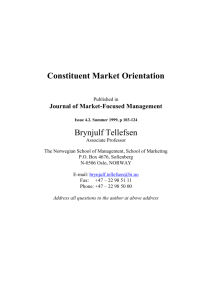Exercises for practice sessions
advertisement
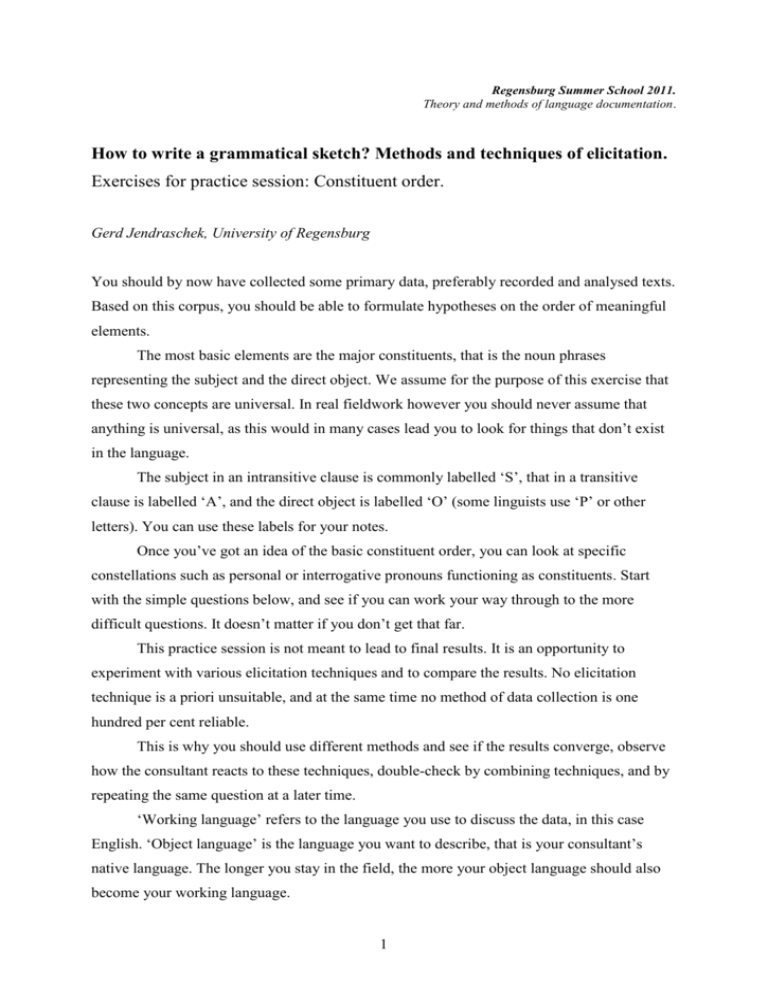
Regensburg Summer School 2011. Theory and methods of language documentation. How to write a grammatical sketch? Methods and techniques of elicitation. Exercises for practice session: Constituent order. Gerd Jendraschek, University of Regensburg You should by now have collected some primary data, preferably recorded and analysed texts. Based on this corpus, you should be able to formulate hypotheses on the order of meaningful elements. The most basic elements are the major constituents, that is the noun phrases representing the subject and the direct object. We assume for the purpose of this exercise that these two concepts are universal. In real fieldwork however you should never assume that anything is universal, as this would in many cases lead you to look for things that don’t exist in the language. The subject in an intransitive clause is commonly labelled ‘S’, that in a transitive clause is labelled ‘A’, and the direct object is labelled ‘O’ (some linguists use ‘P’ or other letters). You can use these labels for your notes. Once you’ve got an idea of the basic constituent order, you can look at specific constellations such as personal or interrogative pronouns functioning as constituents. Start with the simple questions below, and see if you can work your way through to the more difficult questions. It doesn’t matter if you don’t get that far. This practice session is not meant to lead to final results. It is an opportunity to experiment with various elicitation techniques and to compare the results. No elicitation technique is a priori unsuitable, and at the same time no method of data collection is one hundred per cent reliable. This is why you should use different methods and see if the results converge, observe how the consultant reacts to these techniques, double-check by combining techniques, and by repeating the same question at a later time. ‘Working language’ refers to the language you use to discuss the data, in this case English. ‘Object language’ is the language you want to describe, that is your consultant’s native language. The longer you stay in the field, the more your object language should also become your working language. 1 Simple questions: 1. CONSTITUENT ORDER VARIATION a. Which order of constituents seems dominant in the corpus you have so far? Is variation common? You can use labels such as ‘SV’ or ‘AOV’. b. Take examples from the corpus and vary the order of constituents, pronounce your created examples in front of the consultant, and observe the reaction. c. Try using stimuli, for example a drawing or photo of a transitive situation, which the consultant will have to describe. d. Ask the consultant to translate simple examples of transitive clauses into the object language. Use different verbs and see if the results converge. e. Take these translations and vary them (in the object language), changing the order of constituents, making up new sentences with the words you have so far. Ask the consultant if these sentences are possible. If the reaction is negative, make sure to distinguish between syntactic violations and pragmatic implausibility. f. To be sure, ask the consultant to repeat the example: A consultant may accept an example if it is possible to figure out the meaning, even though it contains mistakes. However, a consultant is unlikely to repeat an example that contains mistakes, so watch out for subtle differences between your and the consultant’s version of the example. g. Ask for translations back into the working language: A consultant may say that an example you created is well-formed, but it may not mean what you think it means. 2. INFORMATION STRUCTURE a. In many languages, it is possible to topicalize a constituent without further morphological marking by simply putting it in front of the clause. Other languages have bound topic markers. Does any of the constituent order variation you have seen so far qualify as topicalization? b. An afterthought is a phrase at the end of a clause, in particular a post-verbal noun phrase in an otherwise verb-final language. Can you identify afterthought phrases in the language? In which pragmatic contexts would you find them? c. Some positions in a clause may be associated with focus, i.e. new or contrastive information, as in JOHN ate the mango (not Maria) vs. John ate the MANGO (not the banana). Is focus related to constituent order in the language? 2 Difficult questions: 3. QUESTIONS a. Does the order of constituents change in polar questions (also known as yes/no questions)? b. Does constituent order change in constituent questions, that is when a constituent is represented by a question word such as ‘what’ or ‘who’? c. Compare again data from different sources: your analysed text corpus, translations in both directions, and your own variations of previously obtained examples. 4. PRONOUNS a. Replace noun phrases in various positions by personal pronouns. b. Does pronominalisation affect constituent order? c. Pro-drop refers to the optionality of overt noun phrases. In some languages, a finite verb alone can constitute a full transitive clause, as noun phrases (including pronouns) can be omitted if recoverable from the context (also known as ‘zero anaphora’). Is pro-drop/zero anaphora possible in the language? Compare corpus examples with elicited examples. 3
